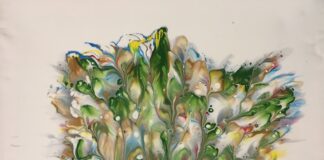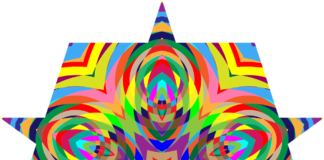Color Analysis, also known as color consultancy or color psychology, is a method used to determine the most flattering colors for an individual based on their natural features such as skin tone, hair color, and eye color. This analysis aims to identify a person’s unique color palette, which can then be used to guide decisions related to clothing, makeup, hair dye, and even interior design choices. The process typically involves assessing a person’s undertones, contrast levels, and overall coloring to determine which colors will enhance their appearance and make them look their best.
Color Analysis is rooted in the belief that certain colors can complement or detract from an individual’s natural beauty, depending on factors such as skin tone and undertone. By understanding the principles of color theory and how they interact with human physiology, color analysts can help clients identify the most flattering shades for their unique features. This can have a significant impact on a person’s overall appearance, boosting their confidence and self-esteem while minimizing the need for trial and error when selecting clothing or makeup.
The practice of Color Analysis dates back to the early 20th century when artists and fashion designers began exploring the relationship between color and personal style. It gained widespread popularity in the 1980s with the publication of books such as “Color Me Beautiful” by Carole Jackson, which introduced the concept of seasonal color analysis based on the four primary color seasons: spring, summer, autumn, and winter. Since then, Color Analysis has evolved to encompass a broader range of methodologies and approaches, including the use of digital tools and software to analyze color palettes more accurately.
Color Analysis typically begins with an assessment of the client’s skin tone, which is classified into categories such as warm, cool, or neutral based on the underlying pigments present in the skin. Warm-toned individuals tend to have yellow or golden undertones, while cool-toned individuals have pink or blue undertones. Neutral-toned individuals may have a combination of both warm and cool undertones. Once the client’s undertone is determined, the color analyst can then recommend a range of colors that will complement their skin tone and enhance their overall appearance.
In addition to skin tone, Color Analysis also takes into account other factors such as hair color, eye color, and contrast levels. For example, individuals with dark hair and eyes may have higher contrast levels and can often wear more intense or saturated colors, while individuals with lighter hair and eyes may benefit from softer, more muted tones. Eye color can also play a role in determining which colors are most flattering, as certain hues can enhance the natural vibrancy of the eyes.
The ultimate goal of Color Analysis is to help individuals develop a personalized color palette that reflects their unique features and personal style. This palette can then serve as a guide for making informed decisions when selecting clothing, accessories, makeup, and even home decor. By understanding which colors work best for them, individuals can create cohesive and harmonious looks that enhance their natural beauty and make them feel confident and empowered in their appearance.
Color Analysis has applications beyond personal styling and fashion, extending into areas such as branding, marketing, and interior design. Businesses often use color psychology to evoke specific emotions or associations in their branding and marketing materials, while interior designers use color theory to create harmonious and visually appealing spaces. In each of these contexts, an understanding of Color Analysis can be invaluable in achieving desired outcomes and creating experiences that resonate with target audiences.
Color Analysis is a powerful tool for understanding the relationship between color and personal style. By assessing factors such as skin tone, hair color, eye color, and contrast levels, color analysts can help individuals identify the most flattering colors for their unique features. Whether used for personal styling, branding, marketing, or interior design, Color Analysis offers a wealth of benefits, empowering individuals to make informed decisions and express themselves authentically through color.
Color Analysis, with its roots in the understanding of color theory and human physiology, continues to evolve with advancements in technology and research. Modern color analysts may use digital tools and software to enhance the accuracy and efficiency of their analyses, allowing for more precise color matching and personalized recommendations. These tools may include color swatch libraries, virtual draping software, and color analysis apps that can assess a client’s coloring and provide tailored recommendations in real-time. By leveraging technology in this way, color analysts can offer a more dynamic and interactive experience for their clients, enhancing the overall effectiveness of the analysis process.
Furthermore, Color Analysis has become increasingly inclusive and diverse, recognizing that individuals come in a wide range of skin tones, ethnicities, and cultural backgrounds. While traditional color analysis systems may have been limited in their scope, contemporary approaches strive to accommodate the unique needs and preferences of all clients, regardless of their race or ethnicity. This includes developing color palettes that are specifically tailored to individuals with deeper skin tones or different cultural aesthetics, ensuring that everyone can benefit from the transformative power of color.
In addition to its practical applications, Color Analysis also has psychological and emotional implications, influencing how individuals perceive themselves and interact with the world around them. Wearing colors that complement one’s natural features can boost confidence, enhance mood, and even convey specific messages or emotions to others. For example, wearing vibrant or bold colors may exude energy and enthusiasm, while softer or more muted tones may convey a sense of calmness or sophistication. By understanding the psychological effects of color, individuals can use Color Analysis to not only enhance their appearance but also to express themselves more effectively and authentically.
Moreover, Color Analysis has the potential to promote sustainability and conscious consumption by encouraging individuals to build cohesive and versatile wardrobes based on their personalized color palettes. By investing in pieces that complement their natural coloring and can be mixed and matched effortlessly, individuals can reduce their reliance on fast fashion and make more mindful purchasing decisions. This approach not only minimizes waste and environmental impact but also promotes a more sustainable and ethical approach to fashion consumption.
As Color Analysis continues to evolve and gain popularity, it is essential to recognize its limitations and complexities. While Color Analysis can provide valuable insights and guidance, it is not a one-size-fits-all solution, and individual preferences and cultural influences must also be taken into account. Additionally, color trends and personal preferences may change over time, requiring periodic reassessment and adjustment of one’s color palette to ensure it remains relevant and reflective of their evolving style and identity.
In conclusion, Color Analysis is a multifaceted discipline that combines elements of art, science, psychology, and culture. By understanding the relationship between color and personal style, individuals can harness the power of color to enhance their appearance, express themselves authentically, and navigate the complexities of the modern world with confidence and grace. Whether used for personal styling, branding, marketing, or interior design, Color Analysis offers a wealth of benefits, empowering individuals to make informed decisions and live more vibrant and colorful lives.














